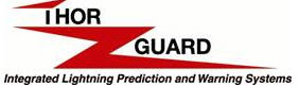 More rain and the possibility of severe weather are predicted for today’s opening round of the U.S. Open at historic Merion Golf Club in Ardmore, Pa. But the USGA’s Mike Davis is confident players, fans and maintenance personnel will receive accurate weather updates in time to take necessary precautions.
More rain and the possibility of severe weather are predicted for today’s opening round of the U.S. Open at historic Merion Golf Club in Ardmore, Pa. But the USGA’s Mike Davis is confident players, fans and maintenance personnel will receive accurate weather updates in time to take necessary precautions.
“We have used a company for years called Thor Guard Weather. They are outstanding. They’re one of the people that truly invented some of the lightning– not only detection, but prediction things. So we’ve used them and we’ve had tremendous success,” Davis, the USGA’s executive director, told reporters during a press conference on Wednesday.
Weather has been one of the major storylines of the championship thus far. The course was soaked with five inches of rain in four days, and rain twice stopped practice rounds on Monday.
The USGA has relied on Thor Guard technology at major championships since 1994.
“They use a combination of radar, they use lightning prediction, lightning detection devices. And not only are those devices here onsite at Merion, but they’re actually spread out around Philadelphia,” Davis said.
Jake Swick , a Thor Guard meteorologist, is on site at Merion and monitors computer forecasting models built on Thor Guard’s atmospheric electrostatic analysis technology. If conditions look ripe for severe weather, he’ll quickly relay the information to USGA officials who will decide whether to halt play and possibly evacuate the course.
“It really does give a great picture,” Davis said of the Thor Guard technology. “We’re quite comfortable with it. They’re as good as anybody in the business.”
Threatening weather stopped play and forced evacuations at the U.S. Open in 2001 (Southern Hills in Tulsa), 2002 (Bethpage in Farmingdale, NY) and 2004 (Shinnecock Hills in Shinnecock Hills, NY). During the 2001 Kemper Open at TPC Potomac Avenel in Potomac, Md., a tornado touched down less than a half mile from the course, downing trees and damaging buildings.
Lightning presents the gravest danger to people and property. An average of 35 lightning-related fatalities was recorded by the National Weather Service over the past decade (including a record low of 26 in 2011), a 33 percent reduction over the previous 10-year period. From 2006 to 2012, eight lightning-related deaths have occurred on golf courses.
“A lot of people just don’t understand how dangerous lightning really is,” said Thor Guard president Robert Dugan, whose company has installed lightning prediction systems at some 1,500 courses in the U.S. “They don’t realize it could be 100 million volts of electricity coming at them faster than they can blink an eye.”
Thor Guard www.thorguard.com

